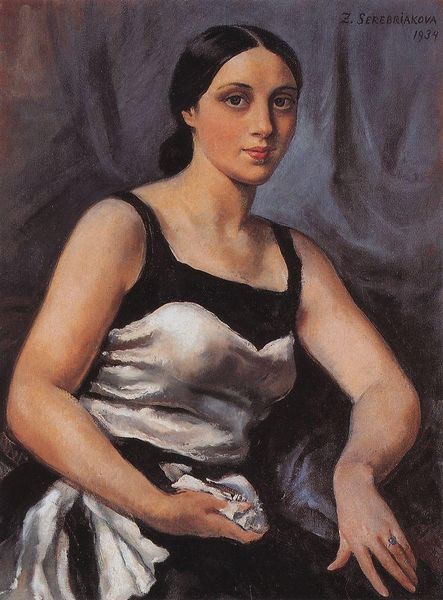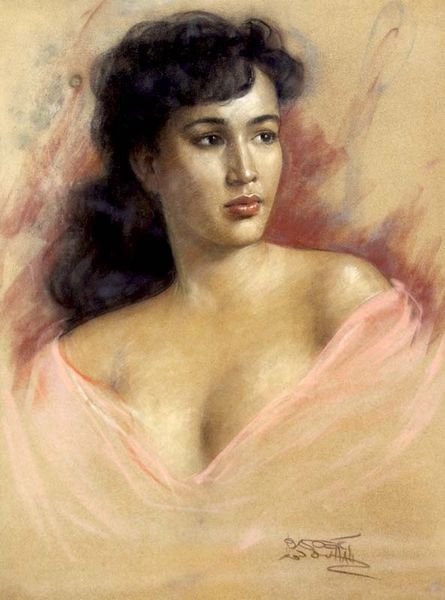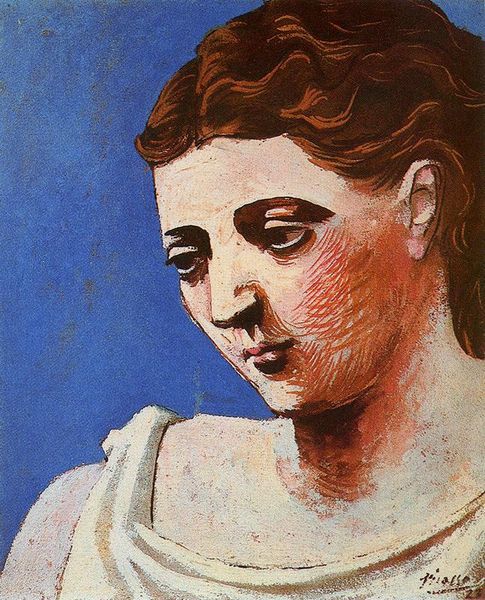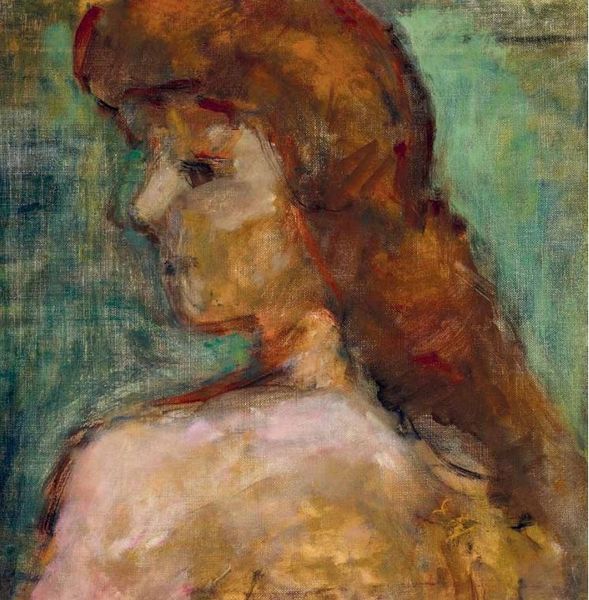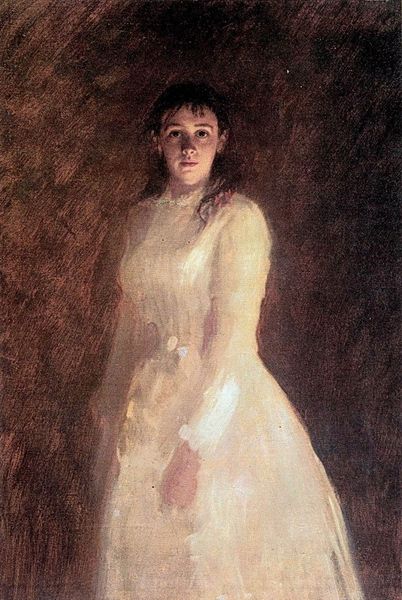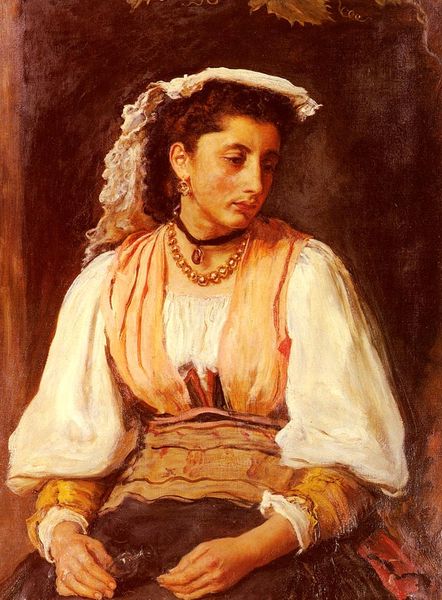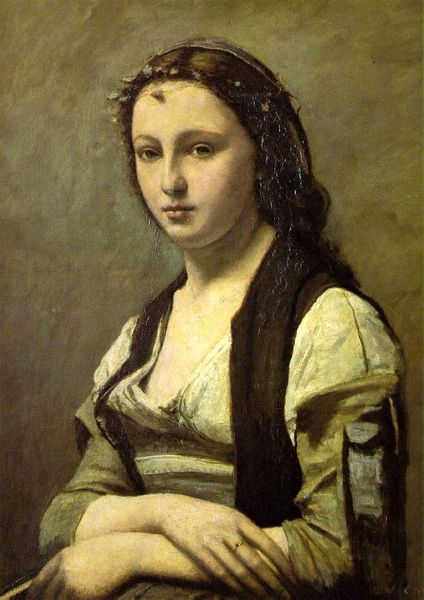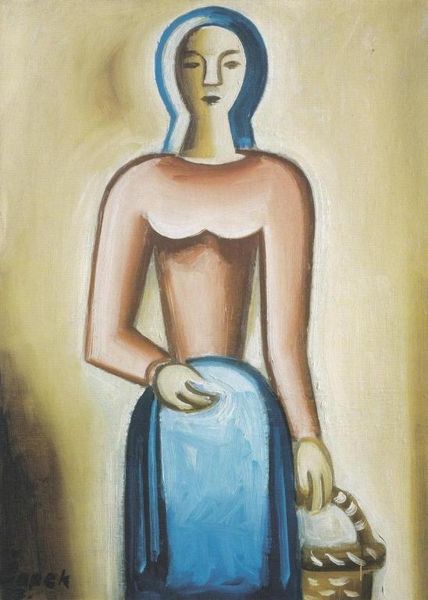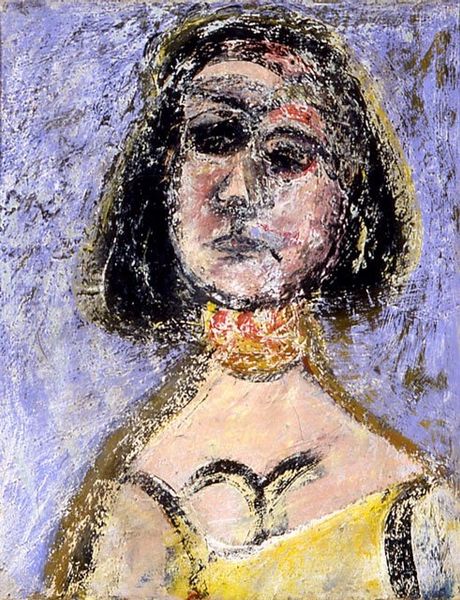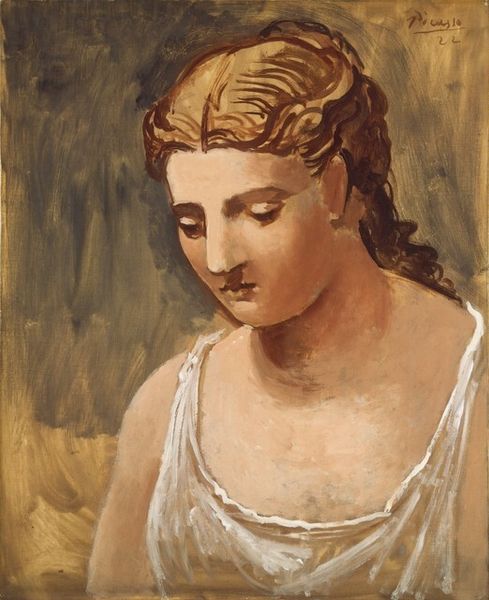
painting, oil-paint
#
portrait
#
cubism
#
portrait image
#
portrait
#
painting
#
oil-paint
#
figuration
#
portrait reference
#
portrait head and shoulder
#
animal drawing portrait
#
portrait drawing
#
facial portrait
#
lady
#
portrait art
#
female-portraits
#
modernism
#
fine art portrait
#
digital portrait
Copyright: Pablo Picasso,Fair Use
Editor: Here we have Picasso's "Seated Woman," painted in 1923, rendered with oil paint. It's striking how he uses these bold, almost crude brushstrokes, to create the portrait. What are your initial thoughts? Curator: The 'crude brushstrokes,' as you call them, speak volumes. This piece arrives amidst a crucial shift in Picasso’s career. Coming off the heels of high modernist exploration of cubism during a period of heightened nationalism after WWI. How do you think his return to figuration reflects societal concerns of the era? Editor: Well, it feels like a departure. Almost like turning away from intellectual exercises to something more… grounded, maybe? The woman's presence is powerful despite the distortions. Curator: Exactly. Think about it - cubism fractured reality; Post-war Europe was fractured in its own way. The return to the figure, particularly the female form, signals a desire for stability, for a return to classical ideals perhaps, but filtered through the anxieties of a rapidly changing world. Is she an individual or some modern archetype? What do you think is suggested by that blue backdrop, then? Editor: The blue makes her stand out. Perhaps representing a kind of isolation? Or maybe setting her apart from the chaos? Curator: Possibly both. Picasso often used color to convey emotion, but also as a tool to destabilize perception. What societal pressures do you believe contributed to the shifting artistic climate during that time, and how might this painting speak to the role of women in a post-war society that wanted them back in the traditional, more domestic spaces? Editor: It’s fascinating to consider this painting within the broader historical and societal context. It’s more than just a portrait; it’s a reflection of a world in flux, with a bit of push-pull happening, figuring out roles and spaces! Curator: Precisely! Examining it within history enriches our understanding of Picasso’s choices. It certainly broadens how we view a painter such as him.
Comments
No comments
Be the first to comment and join the conversation on the ultimate creative platform.
